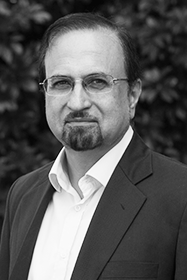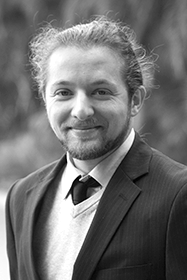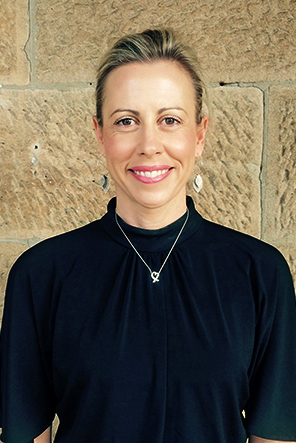HEIDI DOUGLASS | h.douglass@unsw.edu.au
The Dementia Australia Research Foundation and the Yulgilbar Alzheimer’s Research Program (YARP), have jointly announced three, rather than one, recipients of its inaugural $1 Million Dollar Innovation Grant for new research ideas that advance dementia research.
A $1 million grant has been awarded to Co-Director of UNSW Sydney’s Centre for Healthy Brain Ageing (CHeBA), Professor Perminder Sachdev AM.
The Yulgilbar Alzheimer’s Research Program’s Scientific Director, Professor Bob Williamson, said the judging panel assessed all the submissions for their novelty and innovation, links to people living with dementia, families and carers, and the extent to which they would be developing and introducing new and younger researchers into the dementia field.
“I congratulate Professor Sachdev and his team, who propose to use nanoparticles to move across the blood brain barrier and target dementia-specific molecules in the brain such as amyloid and tau,” Professor Williamson said.
“This offers a chance of better, more rapid and accurate diagnosis, and in the long run the team hope to show that the nanoparticles may be used to piggy-back drugs into the brain to delay or treat dementia.”
Professor Perminder Sachdev said this research would be a collaboration between clinical neuroscience and nanoscience and therefore has the potential to transform the diagnostics and therapeutics of neurodegenerative disorders.
“There is currently no treatment to prevent or modify the course of Alzheimer’s disease and other neurodegenerative disorders,” said Professor Sachdev.
“Of the many obstacles to achieving the goal of prevention and cure of Alzheimer’s disease, we have identified two that can potentially be overcome with the latest developments in nanoscience. Firstly, the challenge of an easily available early diagnostic test can be met by the use of nanoparticles with superparamagnetic properties as imaging agents, tagged with appropriate ligands, for MRI and the newly emerging magnetic particle imaging.
“Secondly, nanoparticles can be harnessed as drug-delivery systems to deliver novel therapeutic agents directly to the site of pathology in the brain,” said Professor Sachdev.
Two separate $500,000 Grants have been awarded to Professor Simon Bell at the Centre for Medicine Use and Safety, Faculty of Pharmacy and Pharmaceutical Sciences, Monash University, and Professor Chennupati Jagadish AC from the Australian National University.
Dementia Australia Research Foundation Chair, Professor Graeme Samuel AC, said that submissions to the inaugural $1 Million Innovation Grant so inspired the judging panel and funders that an additional $1 million would be shared between two runner-up projects.
“Dementia Australia is thrilled to see the Grant attract a brilliant cross-pollination of internationally-recognised scientists and researchers across areas of nanoscience, stem-cell biology and health data,” Professor Samuel said.
Commitment to research aimed at preventing and treating all forms of dementia, and especially Alzheimer’s disease, has grown both in size and substance during the past five years.
“In 2013 the Australian Government allocated $200 million to the Boosting Dementia Research Initiative which has been crucial to creating momentum in Australia and positioning our researchers on the world stage,” Professor Samuel said.
“These new grants, coming from the Dementia Australia Research Foundation, represent a truly exciting development in the funding of internationally-significant dementia research, which has been achieved through a collaborative partnership of philanthropic organisations that have a shared vision for research in Australia.
“With more than 40 high-calibre separate bids for these grants, our Innovation Grant has clearly demonstrated the numbers of Australian doctors and scientists keen to get involved in dementia research.
“I call on all governments and philanthropists to consider how they too can expand research into dementia in Australia and make a difference to the lives of all people impacted by dementia now and for the generations to come.”
The successful CHeBA project is a collaboration between researchers at the Centre for Healthy Brain Ageing (CHeBA) (CIs Sachdev, Wen, Poljak, Mather, Brady), the Australian Centre for Nanomedicine (ACN), School of Chemistry UNSW (CIs Gooding, Tilley, Gloag), the Biological Resource Imaging Lab at UNSW (CI Bongers), the Melbourne Dementia Research Centre (MDRC) (CI Bush) and ARC Centre for Excellence in Convergent Bio-Nano Science and Technology (CBNS), University of Melbourne (CI Caruso). SPIONs are developed in the ACN and CBNS, and the preclinical and clinical work is carried out in CHeBA and MDRC.
Contributors: Dr Nady Braidy, ARC DECRA Fellow, responsible for the preclinical testing of SPIONs; Dr Lucy Gloag, post-doctoral fellow, responsible for production and labelling of SPIONs; Dr Kristian Kempe, Dementia Research Fellow, working on functionalisation of anti-ferroptotic and chelating NPs; Dr Olga Shimoni, Dementia Research Fellow, for developing iron oxide NPs for direct ligation of amyloid; and Ms Marina Ulanova, PhD student.




